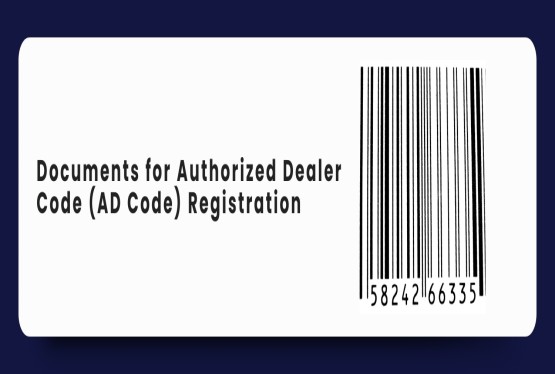Definition
The design under the Designs Act is defined as features of shape, configuration, pattern, ornament, or composition of lines or colors applied to an article, whether in two-dimensional or three-dimensional (or both) forms. According to the Designs Act 2000 in India, it includes aspects that are judged solely by the eye and do not involve functional, mechanical, or structural aspects. The key components of this definition include:
1. Visual appeal: It is judged solely by the eye, meaning it must appeal to the aesthetic or visual sense.
2. Originality: The design must be new and original, not previously published in any country.
3. Non-functionality: It should not be dictated by the technical or functional requirements of the product, so purely functional features are excluded.
4. Application: The design must be applied to an article by an industrial process, making it applicable for commercial purposes.
The objective of the Designs Act is to protect such visual designs from unauthorized copying, ensuring the creators benefit from their original designs.
Salient Features of the Design Act,2000
The Designs Act, 2000 in India outlines specific provisions to protect the unique aesthetic features of industrial designs. The salient features of the Act include:
1. Eligibility: For a design to qualify, it must be new and original, not previously published or used in India or abroad. It must not be a part of the public domain before registration.
2. Exclusions: Functional or technical aspects of a product are not covered under the Act. Any design determined solely by a product's function is not eligible for protection.
3. Duration of Protection: The initial protection under the Act is for ten years from the registration date. It can be extended by an additional five years, providing a total of fifteen years of protection.
4. Registration and Ownership: Registration grants the registered proprietor exclusive rights to use, sell, or license the design. This right helps prevent unauthorized use or imitation by others.
5. Infringement and Remedies: If a registered design is copied or imitated, the proprietor can take legal action for infringement. The Act provides for compensation and penalties against those who infringe upon registered designs.
6. Design Office and Administration: The Act designates the Controller General of Patents, Designs, and Trade Marks as responsible for design registration and maintenance of design records.
Important sections of the Designs Act, 2000 outline core principles and protections under it
1. Section 2-Definitions
Provides definitions of key terms, including "design," "article," "original," and others. This section is foundational to understanding what qualifies as a "design" under the Act.
2. Section 4-Prohibition of Registration of Certain Designs
Specifies designs that cannot be registered, such as those that are not new or original, or those that have been disclosed to the public before the filing date.
3. Section 5 - Application for Registration
Outlines the procedure for applying for design registration, including filing requirements and applicant eligibility.
4. Section 6 - Registration to the Proprietor
Defines who can apply for registration, granting the first proprietor (typically the creator) exclusive rights to register the design.
5. Section 10 - Duration of Copyright in Registered Designs
Provides the duration of protection for registered designs, initially ten years, with an option to extend for an additional five years, totaling fifteen years of protection.
6. Section 11 - Restoration of Lapsed Designs
Allows for the restoration of a design that has lapsed due to non-payment of renewal fees, provided certain conditions are met.
7. Section 13 - Cancellation of Registration
Describes the grounds for which a registered design may be canceled, such as if the design lacks novelty or originality, or if it was fraudulently registered.
8. Section 15 - Copyright Protection Overlap
States that designs registered under the Designs Act cannot simultaneously enjoy copyright protection under the Copyright Act.
Important Case Laws under the Design Act, 2000
1. Gopal Glass Works Ltd. v. Assistant Controller of Patents and Designs (2006)
-
Issue: The case revolved around the cancellation of design registration based on prior publication.
-
Decision: The court held that a design could not be considered new or original if it was published anywhere before the date of application. This case reinforced the importance of originality and prior art in design registration.
2. Dabur India Ltd. v. Amit Jain (2009)
-
Issue: Dabur sought to prevent imitation of its packaging design for a honey product.
-
Decision: The Delhi High Court ruled in favor of Dabur, emphasizing that design protection covers unique visual appeal that contributes to product recognition in the market. It reinforced the exclusivity provided to registered designs, particularly in cases of packaging.
3. Philips v. Shree Sant Kripa Appliances (2011)
Issue: This case involved Philips seeking an injunction against Shree Sant Kripa Appliances for copying its registered design.
Decision: The court upheld Philips' exclusive rights over its registered design, stressing that design rights aim to protect visual appeal in competitive markets. The ruling reinforced the Act’s purpose of preventing imitation and providing exclusive rights to proprietors.
Conclusion
The Designs Act, 2000 has played a vital role in protecting the intellectual property rights of creators and industrial designers in India. By enforcing strict provisions against infringement and defining exclusive rights for design proprietors, it promotes fair competition and encourages innovation. However, case laws have shown that interpretation of design originality and novelty can be complex, underlining the importance of a clear legal understanding of aesthetic versus functional elements within design rights.












_crop10_thumb.jpg)





_crop10_thumb.jpg)





























-Form_crop10_thumb.jpg)

_crop10_thumb.jpg)






















_learn_crop10_thumb.jpeg)
































_crop10_thumb.jpg)

_crop10_thumb.jpg)





















_crop10_thumb.jpg)















_for_Foreign_Directors_learn_crop10_thumb.jpeg)




_Act,_2015_learn_crop10_thumb.jpg)
